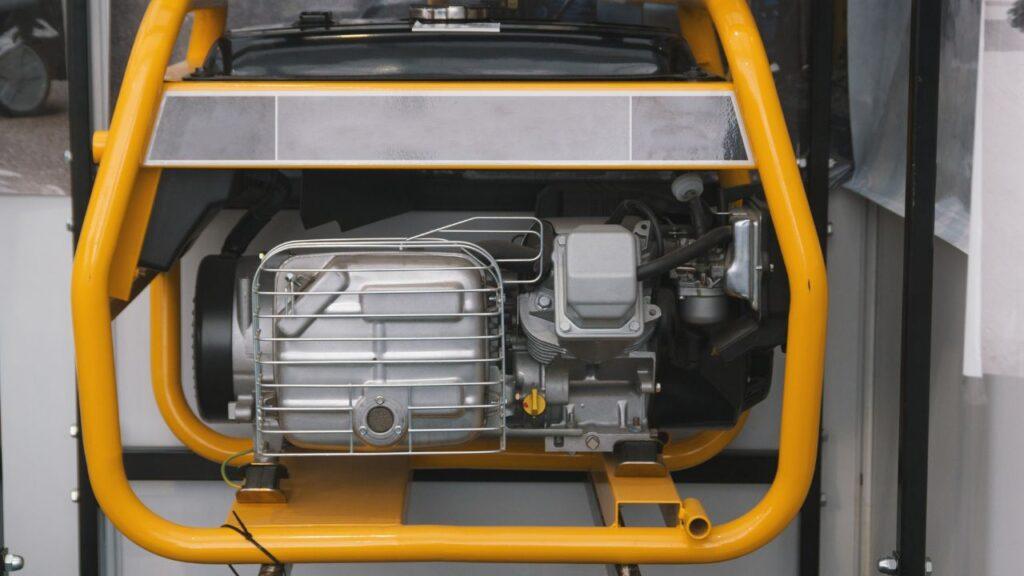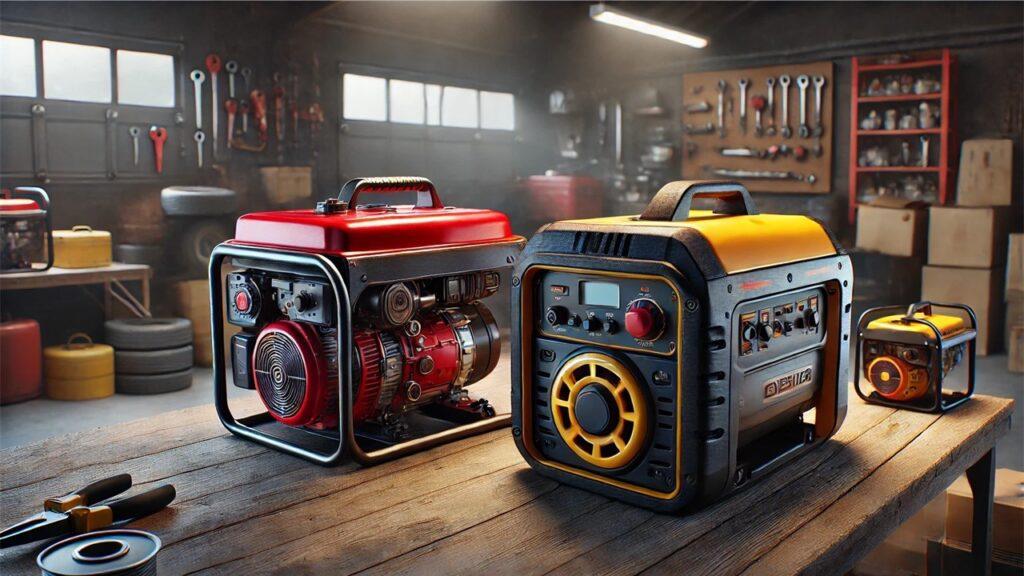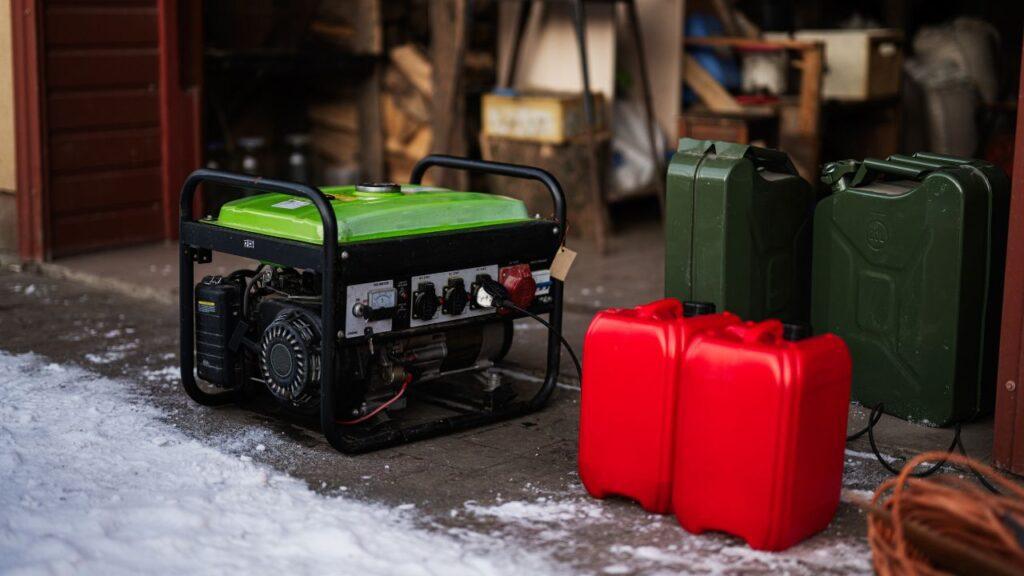
Keeping your home powered during an outage with a generator for emergency home backup is a great idea, but you need a transfer switch to do it safely and effectively. A transfer switch connects your generator to your home’s electrical system, letting you switch from utility power to generator power without any hassle. It also prevents dangerous back-feeding, which can be harmful to utility workers and damage your appliances. In this guide, we’ll go over everything you need to know about transfer switches, including the different types, how to choose the right one, and a step-by-step process to installing a transfer switch for your generator. This way, you can keep your home safe and powered during any blackout.
What is a Transfer Switch?
A transfer switch is an electrical device that allows you to connect a generator to your home’s electrical system. When the power goes out, the transfer switch enables you to switch from the utility power to your generator. This switch ensures that the power from the generator flows safely to your home without back-feeding into the utility lines, which can be extremely dangerous for utility workers.
Transfer switches come in two main types: manual and automatic. A manual transfer switch requires you to physically flip a switch to change the power source, whereas an automatic transfer switch detects power loss and switches to the generator automatically. This automatic function is especially useful if you’re away from home during an outage, ensuring your home remains powered without any intervention.
Benefits of Installing a Transfer Switch
Installing a transfer switch offers several significant advantages that go beyond merely connecting your generator to your home. It’s an essential component for ensuring safety, convenience, and efficiency during power outages. Let’s dive into the key benefits that make a transfer switch a must-have for any generator setup.
- Enhanced Safety: A transfer switch prevents back-feeding, which can endanger utility workers by keeping generator power isolated to your home’s electrical system.
- Convenience: With a transfer switch, you can seamlessly switch between utility and generator power, especially with automatic switches, eliminating manual connections during outages.
- Protects Appliances and Electrical System: It ensures a safe connection, preventing power surges that can damage appliances and the home’s electrical system.
- Compliance with Electrical Codes: Many local codes require a transfer switch for generator connections, helping you avoid fines and legal issues.
- Increases Generator Efficiency: It allows selective powering of essential circuits, maximizing your generator’s capacity.
- Ease of Use: Transfer switches simplify generator use, avoiding the need for multiple extension cords and reducing the risk of overloading.
By understanding the role and benefits of a transfer switch, you can ensure your generator setup is safe, efficient, and ready to keep your home powered during outages.
Types of Transfer Switches
When it comes to transfer switches, you have two main options: manual and automatic. Each type has its own features and benefits, so it’s important to understand how they work and which one might be best for your needs.
Manual Transfer Switches
A manual transfer switch requires you to physically flip a switch to change the power source from the utility to the generator. Here’s how they work and why you might choose one:
- How They Work: With a manual transfer switch, you need to be present to switch the power source. When the power goes out, you simply walk to the switch, turn off the main utility power, and turn on the generator power. This manual process ensures that you are in control of when and how the power is switched.
- Advantages: Manual transfer switches are generally less expensive than automatic ones. They are simpler to install and maintain, making them a good choice for those who prefer a straightforward, hands-on approach. Additionally, they provide the flexibility to only power specific circuits that you need during an outage, which can be more efficient for smaller generators.
- Ideal Use Cases: Manual transfer switches are ideal for homes and businesses where someone is always present to make the switch. They are also suitable for smaller setups where the cost and complexity of an automatic switch might not be justified.
Automatic Transfer Switches
An automatic transfer switch takes the manual work out of the equation by automatically detecting a power outage and switching to the generator. Here’s what you need to know about them:
- How They Work: Automatic transfer switches monitor the power supply continuously. When they detect a loss of utility power, they automatically switch the power source to the generator. Once the utility power is restored, they switch back to the utility power seamlessly, often without you even noticing the change.
- Advantages: The primary benefit of an automatic transfer switch is convenience. It ensures that your home remains powered even if you are not there to flip the switch. This can be particularly important for homes with critical systems like medical equipment or refrigeration that must remain operational. Automatic switches also offer a faster response time, minimizing the downtime during a power outage.
- Ideal Use Cases: Automatic transfer switches are ideal for larger homes or businesses where power continuity is crucial. They are perfect for situations where you may not always be present to operate a manual switch, such as vacation homes or businesses that need to stay operational 24/7.
By understanding the differences between manual and automatic transfer switches, you can choose the one that best fits your needs and ensures a safe, reliable power supply during outages.
Selecting the Right Transfer Switch for Your Generator
Choosing the right transfer switch is crucial for ensuring your generator system works effectively and safely. Here, we’ll guide you through the key factors to consider when selecting a transfer switch.
Assessing Your Power Needs
Before you select a transfer switch, you need to understand your power requirements. Here’s how to assess your needs:
- Calculate Total Wattage: Make a list of all the appliances and systems you want to power with your generator. Note their wattage requirements and add them up to determine the total wattage your generator needs to supply. This helps you ensure the transfer switch can handle the load.
- Identify Critical Circuits: Focus on the most important circuits, such as those for heating, refrigeration, lighting, and essential electronics. Knowing which circuits are critical can help you choose a transfer switch that matches your needs without overloading your generator.
Compatibility Considerations
Once you know your power needs, it’s time to look at compatibility. Ensuring that your transfer switch is compatible with your generator and home’s electrical system is vital.
- Generator Specifications: Check the specifications of your generator, including its wattage capacity and the type of connections it supports. Ensure the transfer switch you choose can handle the generator’s output and has compatible connection types.
- Transfer Switch Ratings: Transfer switches come with different amperage and voltage ratings. Match these ratings to your home’s electrical system and the generator’s output. A mismatch can lead to inefficient performance or even damage.
- Circuit Breaker Compatibility: Some transfer switches are designed to work with specific types of circuit breakers. Verify that the transfer switch is compatible with the breakers in your electrical panel to avoid installation issues.
By carefully assessing your power needs and ensuring compatibility with your generator and home electrical system, you can select a transfer switch that will provide reliable and safe power during outages.
Tools and Materials Needed for Installation
Proper installation of a transfer switch requires specific tools and materials. Having everything ready beforehand will make the process smoother and more efficient. Here’s a detailed list of what you’ll need:
Essential Tools
- Screwdrivers: Both flathead and Phillips screwdrivers are essential for removing and securing screws during installation.
- Drill and Drill Bits: A power drill with various drill bits is necessary for mounting the transfer switch and running wiring through walls or floors.
- Wire Cutters and Strippers: These tools are crucial for cutting wires to the correct length and stripping insulation to make secure electrical connections.
- Pliers: Needle-nose pliers and regular pliers will help you manipulate and position wires.
- Voltage Tester: A voltage tester ensures that there is no live current where you are working, which is essential for safety.
- Utility Knife: Useful for cutting through insulation and other materials.
- Conduit Bender (if required): For bending conduit to fit around corners and into tight spaces.
Materials and Components
- Wires: Appropriate gauge wires for connecting the transfer switch to your generator and your home’s electrical panel. The gauge will depend on the amperage of your circuits.
- Conduit: Electrical conduit protects the wiring between the transfer switch and your home’s electrical panel. Ensure you have enough length to cover the distance.
- Mounting Hardware: Screws, anchors, and brackets for securely mounting the transfer switch.
- Cable Ties: For organizing and securing wires to prevent tangling and ensure a neat installation.
- Safety Gear: Gloves, safety glasses, and possibly ear protection to ensure your safety during the installation process.
Having these tools and materials ready will prepare you for a smooth installation. Ensuring you have the right tools and components on hand will help you avoid interruptions and potential safety hazards.
Preparing for Installation
Preparation is key to a successful and safe installation of your transfer switch. Here’s how to get ready:
Safety Precautions
- Turn Off the Main Power Supply: Before starting any electrical work, make sure to turn off the main power supply to your home. This step is crucial to avoid electric shock or other accidents. Locate your home’s main circuit breaker panel and switch off the main breaker. This will cut power to your entire house.
- Verify the Power is Off: Use a voltage tester to double-check that there is no live current in the circuits you’ll be working on. Test multiple outlets and circuits to ensure the power is completely off. This step cannot be overstressed; even a small mistake can be dangerous.
- Wear Appropriate Safety Gear: Equip yourself with safety glasses to protect your eyes from debris, and wear gloves to prevent electrical shocks and injuries from sharp objects. If you’re working in a tight space or a basement, consider wearing a hard hat for additional protection.
Planning the Installation
- Choose a Suitable Location: Select a location for your transfer switch that is close to your main electrical panel. This minimizes the amount of wiring needed and makes the installation more straightforward. Ideally, the switch should be within a few feet of the panel to reduce the complexity of the wiring.
- Map Out the Wiring Path: Plan the route for the wires from your generator to the transfer switch and from the switch to your electrical panel. Ensure the path is clear and avoids obstacles like plumbing and ductwork. Use conduit to protect the wires and plan any necessary bends and turns to fit the space.
- Gather All Necessary Tools and Materials: Before you begin, make sure all the tools and materials are within reach. This includes screwdrivers, drills, wire cutters, wire strippers, mounting hardware, conduit, and the transfer switch itself.
- Check Local Codes and Regulations: Verify that your installation plan complies with local electrical codes and regulations. Some areas require permits for electrical work or have specific requirements for generator installations.
- Inform Household Members: Let everyone in the house know that you’ll be working on the electrical system and that the power will be off for a period. This helps prevent accidental disruptions and ensures everyone’s safety.
By taking these preparation steps seriously, you set a solid foundation for a safe and efficient installation process. Moreover, proper planning and safety precautions can prevent accidents and ensure that the installation goes smoothly.
Step-by-Step Installation Guide
Installing a transfer switch involves several detailed steps. Each phase must be carried out carefully to ensure a safe and effective setup. Here’s a comprehensive guide to help you through the process.
1. Mounting the Transfer Switch
- Select the Mounting Location: Choose a spot near your main electrical panel. The closer the transfer switch is to the panel, the less wiring you will need.
- Mark the Mounting Holes: Hold the transfer switch against the wall where you plan to mount it. Use a pencil to mark the locations of the mounting holes.
- Drill the Holes: Use an appropriate drill bit to make holes for the mounting screws. Ensure the holes are aligned correctly with the marks.
- Secure the Transfer Switch: Align the transfer switch with the drilled holes and use screws to secure it to the wall. Make sure it is firmly attached and level.
2. Connecting Wires and Circuits
- Prepare the Wires: Cut and strip the insulation from the ends of the wires you’ll be connecting. Ensure you have enough length to reach between the transfer switch and the main panel.
- Connect the Generator Input: Attach the wires from the generator to the appropriate terminals on the transfer switch. These terminals are usually labeled, so make sure you follow the manufacturer’s instructions.
- Connect the Main Panel Wires: Open the main electrical panel and identify the circuits you want to connect to the transfer switch. Disconnect these circuits from the main panel and connect them to the transfer switch terminals.
- Connect the Utility Power Wires: Attach wires from the transfer switch to the main electrical panel where the circuits were originally connected. This setup ensures that power can flow from the utility through the transfer switch to your home’s circuits.
3. Testing the Connections
- Double-Check All Connections: Before turning anything on, go through all the connections you’ve made. Ensure that all wires are secure and correctly attached to the terminals.
- Turn On the Main Power Supply: Restore power to your home by switching on the main circuit breaker.
- Test the Transfer Switch: Simulate a power outage by turning off the main utility breaker. Then, start your generator and switch the transfer switch to generator power. Check if the connected circuits are receiving power from the generator.
- Return to Utility Power: Once testing is complete, turn off the generator and switch the transfer switch back to utility power. Ensure that the power is restored to your circuits from the utility line.
4. Troubleshooting Common Issues
- No Power to Circuits: If the circuits are not receiving power, double-check the connections. Ensure that the wires are properly attached and that there are no loose connections.
- Generator Not Starting: Make sure the generator is in good working condition and has enough fuel. Verify that the generator’s output matches the requirements of the transfer switch.
- Circuit Breakers Tripping: This could indicate an overload. Ensure that the total wattage of the connected circuits does not exceed the capacity of the generator and transfer switch.
5. Finalizing the Installation
- Secure and Organize Wires: Use cable ties and clips to secure and organize the wires neatly. This prevents tangling and makes the setup look professional.
- Label the Transfer Switch: Label the transfer switch and its connected circuits for easy identification. This helps in quickly understanding which circuits are powered by the generator during an outage.
- Perform a Full System Test: Conduct a comprehensive test of the transfer switch and generator system. Simulate a power outage, run the generator, and ensure all connected circuits function properly.
Furthermore, by following these detailed steps, you can successfully install a transfer switch and ensure your home is ready for any power outage. Proper installation not only ensures safety but also guarantees that your generator setup will work efficiently when you need it most.
Wrapping It Up!
Installing a transfer switch is an essential step in making sure your generator can safely power your home during a blackout. By following this guide, you can choose the right switch, prepare properly, and complete the installation step by step. This not only keeps your home safe but also makes switching to generator power quick and easy.
Remember, always turn off the main power before starting and double-check all your connections. Safety is the most important thing. If you’re not sure about any step, don’t hesitate to get help from a professional electrician.
With a transfer switch in place, you can have peace of mind knowing your home will stay powered during outages. Moreover, this simple addition ensures that your essential appliances keep running and your family stays comfortable, no matter what. Stay prepared and enjoy the confidence of a well-installed transfer switch.
Related FAQs
How Long Does It Take to Install a Transfer Switch?
The installation process typically takes 3 to 4 hours, depending on your experience and setup complexity.
Do I Need a Permit to Install a Transfer Switch?
Yes, many areas require a permit for electrical work, including installing a transfer switch.
Can I Install a Transfer Switch Myself?
Yes, if you have electrical experience. If not, hiring a professional electrician is recommended.
What Size Transfer Switch Do I Need?
The size depends on your generator’s output and the circuits you want to power. Consult the manufacturer’s guidelines.
How Often Should I Test My Transfer Switch?
You should test your transfer switch monthly to ensure it operates correctly and is ready for an outage.
At our core, we’re a group of passionate generator, inverter, solar energy, battery enthusiasts. We dive deep into the world of tech, especially when it’s about powering your home, RV or outdoors. We try to provide as much value to the readers with our information and how to blog articles as possible. For affiliate articles our honest and transparent reviews of essential tech products are rooted in real-world experience. We take great satisfaction in offering unbiased evaluations, ensuring that you can make informed decisions when investing in your desired techs.




